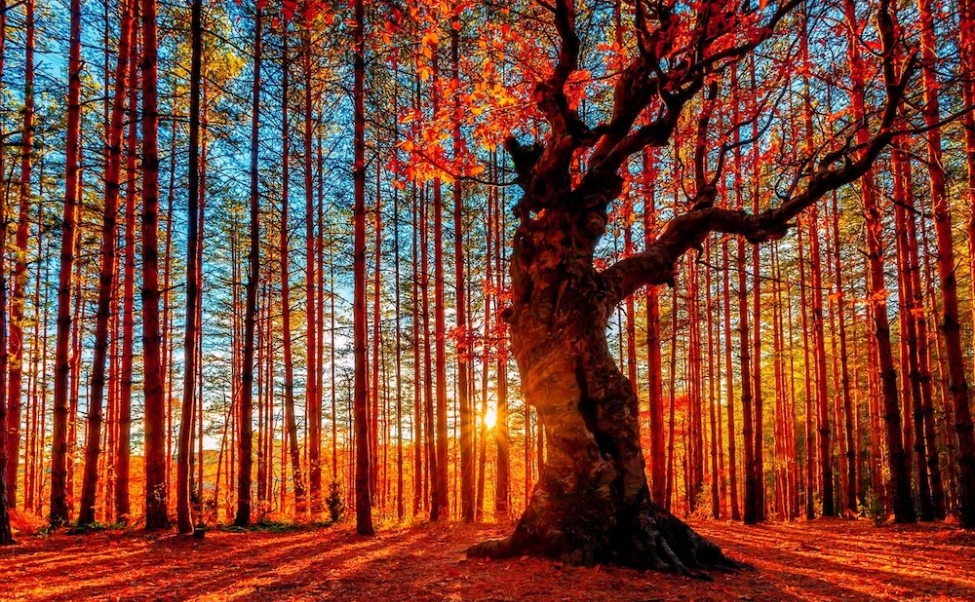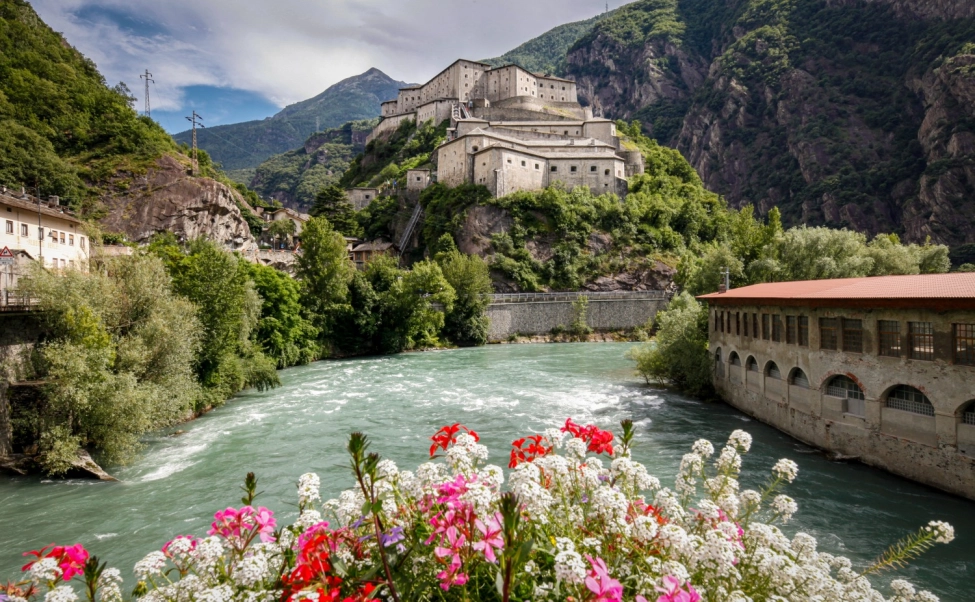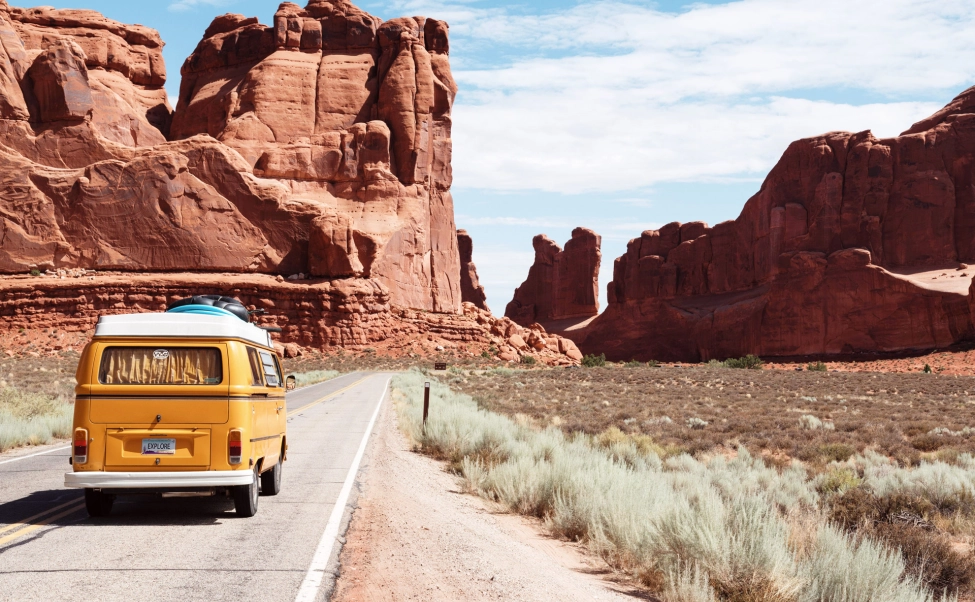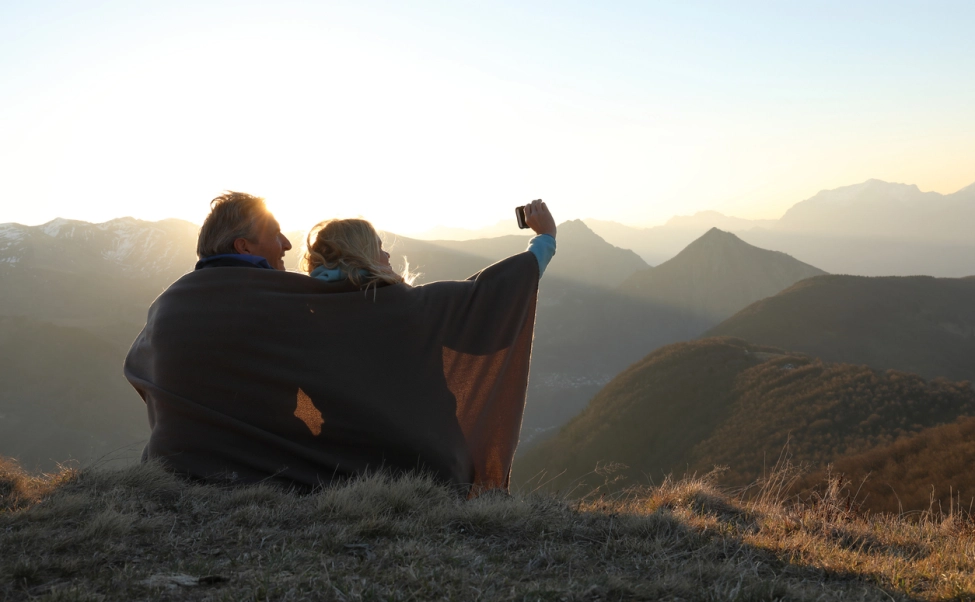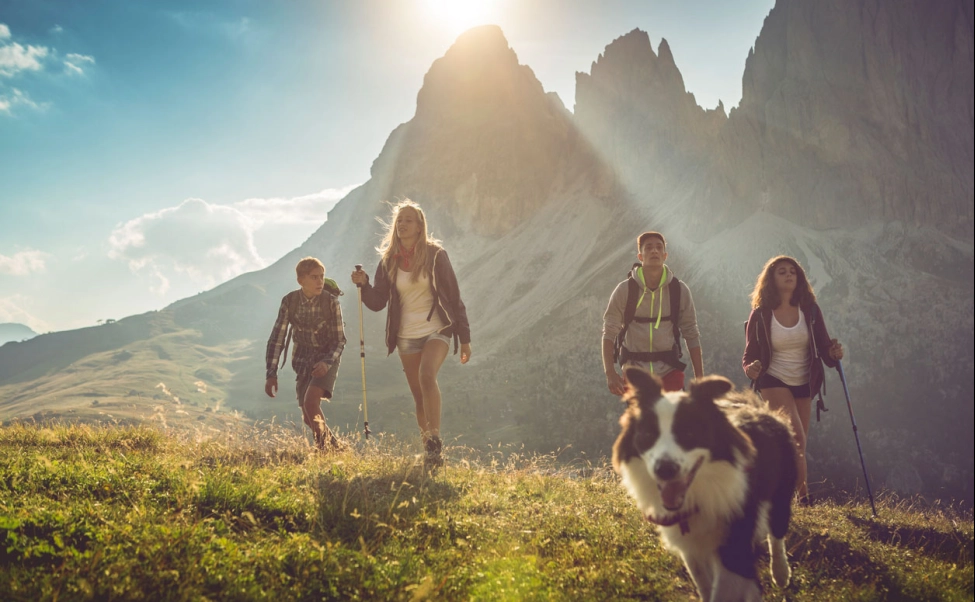- Details
- Written by: Tristan Kennedy
- The Haute Route Guide: TL;DR Version
- What is the Haute Route? History, and the Origins of the Walker's Haute Route
- Walking the Haute Route: Everything You Need to Know
- The Basics of the Haute Route: Timings, Altitude, Elevation Gain
- Accommodation: Where to Stay on the Haute Route
- Preparing for the Trek: Packing for the Haute Route
- Clothing to pack for the Walkers' Haute Route
- Equipment to pack for the Walker's Haute Route
- Itinerary Options: Variations on the Haute Route
- Start & Finish Logistics: Getting to the Haute Route & Home
- Budgeting: How Much does Walking the Haute Route Cost?
- Safety and Navigation: Staying Secure on the Mountain
- The Winter Haute Route for Ski Tourers
- The Haute Route for Cyclists
- Up for the Challenge: Is the Haute Route Right for You?
The Haute Route is perhaps the ultimate alpine hiking trail. Meaning "the high road" in French, it's the name given to the high altitude trek between Chamonix and Zermatt. The route takes you through alpine meadows, across glaciers, and over some of the highest passes in the Alps. While it steers around the actual summits, it offers views of some of the most famous mountains in the world, including Mont Blanc and the Matterhorn.
When writing a guide to the Haute Route, it would in fact, be more accurate to talk about Haute Routes plural, as there are multiple variations on the trek. As well as being among the best walking holidays in Europe, the Haute Route is arguably more famous as one of the all-time classic ski touring challenges. During the spring ski touring season, between mid-March and May, the route is packed alpinists on touring skis.
"It would in fact, be more accurate to talk about Haute Routes plural, as there are multiple variations on the trek"
Capitalising on the original's popularity, various other alpine regions have launched "Haute Routes" of their own in recent years, and to complicate matters further, there are now also cycling events the Haute Route—although they don't tend to run between Chamonix and Zermatt.
There's a note on the ski tourers' Haute Route and the cyclists Haute Route below, but for the purposes of this guide, however, we're mostly concentrating on the Chamonix to Zermatt Walker's Haute Route.
The Haute Route Guide: TL;DR Version

• The Haute Book Route is a scenic trek connecting Chamonix, France, to Zermatt, Switzerland.
• It's best undertaken from mid-July to mid-September for ideal conditions and accessible mountain passes.
• The normal walker's Haute Route usually takes 11-13 days but different variants can adjust the route’s length from 6 to 15 days. They also cater to varying skill levels, fitness levels and time constraints.
• Accommodation on the Haute Route is pretty straightforward. People sleep in mountain huts—refuges, in French—but they often fill up a long time in advance, so it's worth booking months ahead if you're planning on hiking during peak season.
• Safety on the Haute Route is paramount, and it's recommended that you book a guide. Not only will they stop you getting lost, they'll know what to do if anything goes wrong. If you are going to attempt the Haute Route self-guided, you need to be an experienced hiker with excellent navigation skills and mountain awareness.
What is the Haute Route? History, and the Origins of the Walker's Haute Route
It was actually Brits who first dreamt up the idea of the Haute Route in the 1860s. At the time, mountaineering was an alien concept for the majority of French and Swiss farmers who lived in this area of the Alps. Driving cattle and goats through the mountains, meant they were adept at climbing, reading terrain and weather—but most of them saw little reason to venture to the dangerous areas around the peaks. What was the point? There was no money to be made up there, and their lives on the lower slopes were hard enough.
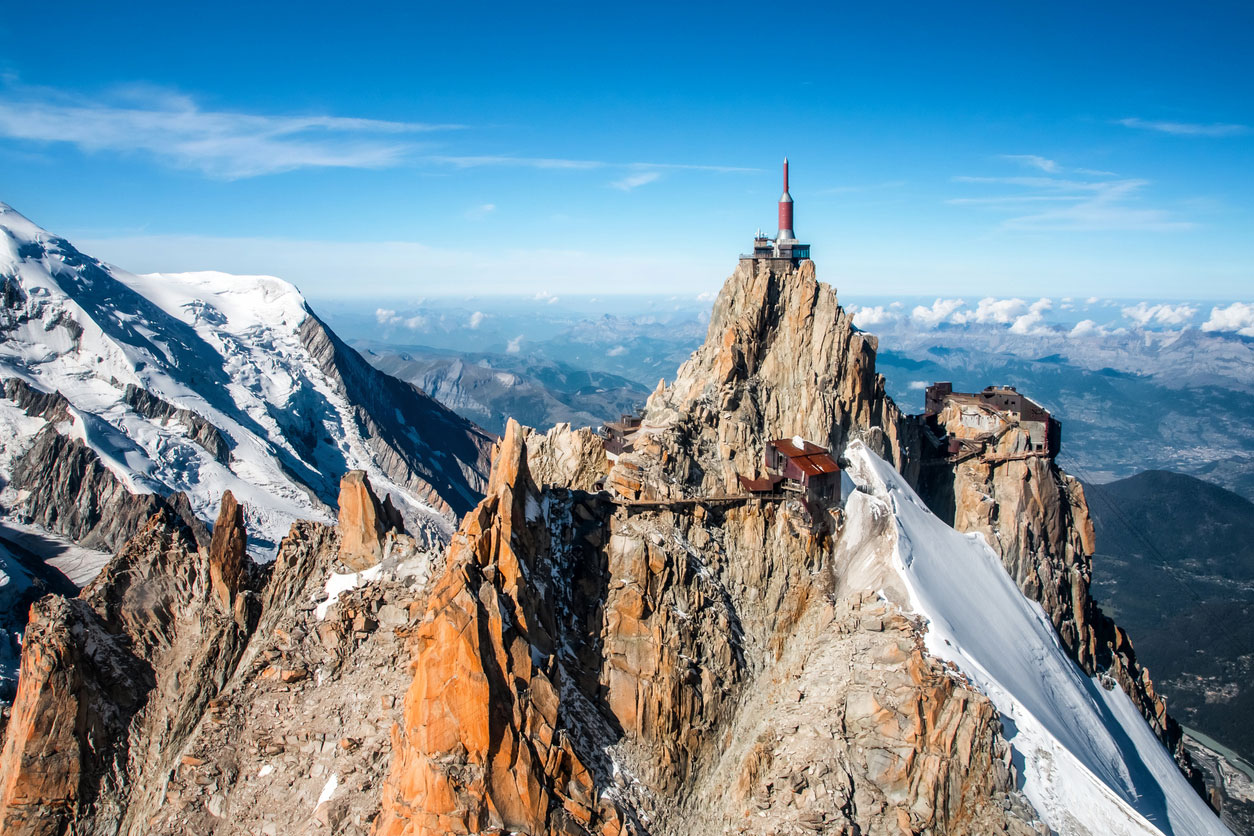
Among wealthy foreigners, however, the idea that reaching a mountain top represented an achievement was fast catching on. Although they were almost always accompanied by local guides, it was British and American adventurers who drove most of the first ascents in the Alps from the 1840s onwards, in flurry of competitive activity which became known as the Golden Age of Alpinism.
In 1857, a group of Victorian gentlemen in London founded the Alpine Club, the world's first. And it was their members who first decided to walk between the two growing capitals of this new sport: Chamonix, the French village beneath the Mont Blanc massif, and Zermatt, at the foot of the Matterhorn.
"It was British and American adventurers who drove most of the first ascents in the Alps from the 1840s onwards"
The route they charted ran below the summits of 10 out of the 12 of the highest peaks in the Alps, and over several high passes. It involved catching a stagecoach between villages at one point, and tackling some seriously tough alpine terrain. In 1903, a group of Frenchmen led by doctor Michel Payot made the same trek on skis—a remarkable feat given the quality of the heavy, wooden equipment available at the time—and the Haute Route became cemented into alpine legend.
As the route became more popular in the 20th century and trails became more established, guides identified an easier set of paths for hikers to follow which meant they wouldn't need to climb above 3,000m or use any specialist mountaineering equipment. This is what's known as The Walker's Haute Route.
Walking the Haute Route: Everything You Need to Know
If you're tackling the Walker's Haute Route, the sweet spot in terms of timing is mid-July to mid-September when the weather is at its most amenable. It's worth bearing in mind, however, that mountain weather is always unpredictable, whatever the season. The French and Swiss Alps can have everything from blazing sunshine to cold days with heavy rain, and even occasional snowfall during the summer months. You’ll want to be prepared for all eventualities.
The Basics of the Haute Route: Timings, Altitude, Elevation Gain
The 'normal' Walker's Haute Route is 213km long, and involves 14,000m of elevation gain. It takes you over 11 high alpine passes, and beneath the summits of 10 of the 12 highest mountains in Europe, including Mont Blanc and the Matterhorn.
It usually takes most people between 11 and 13 days to complete the normal Walker's Haute Route, although variants can take as few as 6 or as many as 15 days at an average pace. (Obviously, if you're Killian Jornet in disguise, you'll be able to do it much quicker.) Whoever you are, though, the days will be long—be prepared to spend 6 to 7 hours on the trail each day, covering up to 25km at a time.
The highest point on the Walker's Haute Route is 2,964m. While the route doesn't involve significant glacier travel, it's not uncommon to encounter snow and ice at those altitudes, even in August, so it's worth packing accordingly—see our tips below.
Accommodation: Where to Stay on the Haute Route

Walkers on the Chamonix to Zermatt Haute Route stay in mountain huts—refuges in French—the majority of which are owned by the They vary wildly in terms of comfort levels, ranging from the rustic charm of traditional huts like the Cabane du Mont Fort to the comfort of 21st century lodges, like the Albert Premier Hut, a popular day hike from the Chamonix Valley.
While you can find some with private rooms, the general rule is that you will be sleeping in a dormitory. Many refuges just have two sleeping areas on either side of a central aisle, and people bunk down next to each other on what's effectively one massive bed.
Mountain huts will provide blankets or duvets and pillows, but you'll be expected to bring a sheet sleeping bag to actually sleep in. That way, they don't need to wash all the duvets after every night. Your guide should be able to loan you a sheet sleeping bag if you don't have one. Some mountain huts have coin or token-operated showers, but they won't provide towels.
"While you can find refuges with private rooms, the general rule is that you will be sleeping in a dormitory"
Refuges at higher elevations sometimes lack running water—drinking water is sold in bottles that are carried up the hill, or airlifted in by resupply helicopters. Most refuges, however, will provide slippers, sliders or crocs for their guests—hiking boots must be taken off at the door.
The food in Haute Route huts is excellent as a rule. Some, like the Cabane du Chanrion near Verbier, are worth diverting from the main route for. Hearty three-course dinners are the norm, while breakfast tends to be a bowl of coffee, and thick slices of bread or baguette with butter and jam. Guests are welcome to make sandwiches to take with them on the trail.
On the 'normal' haute route, huts are often booked a year in advance, so it's worth doing your planning early!
Preparing for the Trek: Packing for the Haute Route
Adaptable clothing is key, as the weather can shift from sunny to stormy in a heartbeat. You will be carrying all your kit with you, so the less you can pack the better. Long term weather forecasts aren't super accurate, but they'll give you a rough idea of the kind of temperatures you will face.
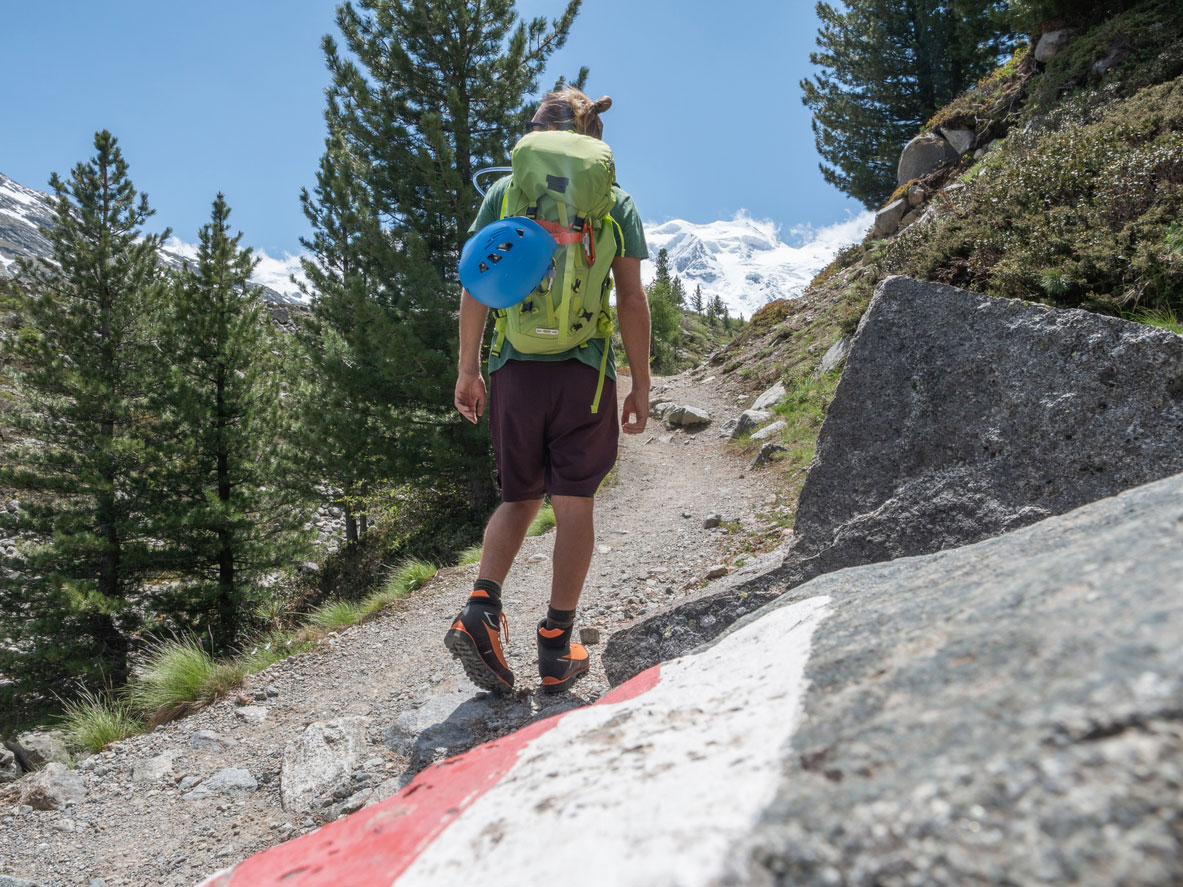
Remember that for every 1,000m you climb, on average the temperature drops by six degrees celsius. Most of the mountain huts will have running water, allowing you to do a "sink wash" of clothes. If they're quick drying, or its sunny, they should dry out overnight, allowing you to alternate pairs of pants, socks and t-shirts and pack far fewer.
The mantra is, as always, "carry as little as you can, but as much as you need."
Clothing to pack for the Walkers' Haute Route
This list is by no means exhaustive, but it's a good starting point.
• Waterproof walking boots which can handle snow.
• A good waterproof jacket.
• Technical trekking trousers, waterproof trousers, or overtrousers in case it's really wet.
• Moisture-wicking base layers.
• A good, lightweight fleece mid-layer
• A decent down jacket.
Equipment to pack for the Walker's Haute Route
This list is by no means exhaustive, but it's a good starting point.
• A decent hiking backpack, to fit all your kit into. Assuming you're alternating underwear and washing it in mountain huts, you should be able to fit everything into something with a 40-50 litre carry capacity (something like the Osprey Exos 48, one of Osprey's best backpacks is ideal). If you're wanting to go longer, you may want to look into larger, 50-litre plus backpacking rucksacks.
• Walking poles—these are especially useful for extra stability on steep descents.
• Sunglasses
• A sun hat or cap
• A reusable water bottle or a hydration bladder that fits into your backpack.
• A first aid kit.
• Earplugs and an eye mask—the huts you'll be sleeping in usually have shared dormitories.
• Walking spikes or mini-crampons—these rubber mounted metal points can be slipped over your hiking boots to help you tackle snow.
• Depending on the route you take, and the conditions you'll face, you may need to think about crampons and an ice axe too. Your guide should be able to loan you these, and any other technical mountaineering equipment, like a harness.
Itinerary Options: Variations on the Haute Route
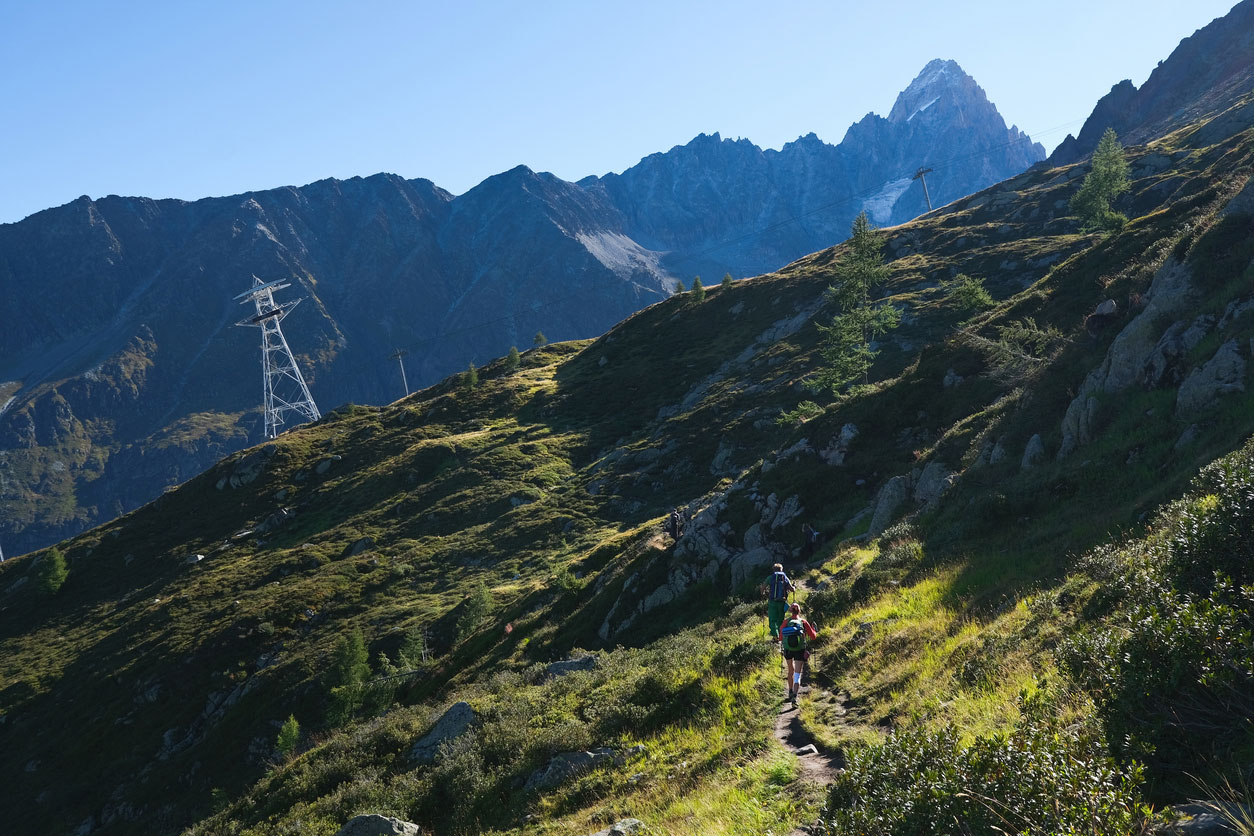
The Haute Route is not a one-size-fits-all adventure. The trail network offers 10 popular alternative routes, ensuring that there’s a version of the Haute Route that matches every hiker’s preferences, fitness and skill levels.
All the variations pass through a few common points, however, including the Pas de Chevres, and the Col des Roux, and most of them involve a night at the Cabane du Mont Fort, a legendary mountain hut near the base of the Bec de Rosses in Verbier.
Start & Finish Logistics: Getting to the Haute Route & Home
The fact that the Haute Route starts in the Chamonix valley and finishes in Zermatt obviously presents a logistical challenge. If you're with a guide, they'll organise transport for you. But if you're self-guided, it's actually surprisingly simple.
From Geneva Airport, multiple transfer companies will take you to Chamonix, which is only just over an hour away. At the end, there are easy train connections from Zermatt directly back to Geneva Airport, or back to Chamonix if you've left a car there. Both journeys take around 4 hours.
Budgeting: How Much does Walking the Haute Route Cost?
Guided packages on the Walker's Haute Route cost around £3,000 per person based on a group of 4 - 8 people with 13 days walking, accommodation in mountain huts, and a night in a hotel at the start and finish.
If you're planning on going self-guided, you can reckon on spending between £50 and £70 per night in each of the huts for half board (ie. breakfast and dinner). You can sometimes book just the bed too, which usually costs about half that, but that means carrying your own food, which would add a lot of weight, so we wouldn't recommend it.
Safety and Navigation: Staying Secure on the Mountain
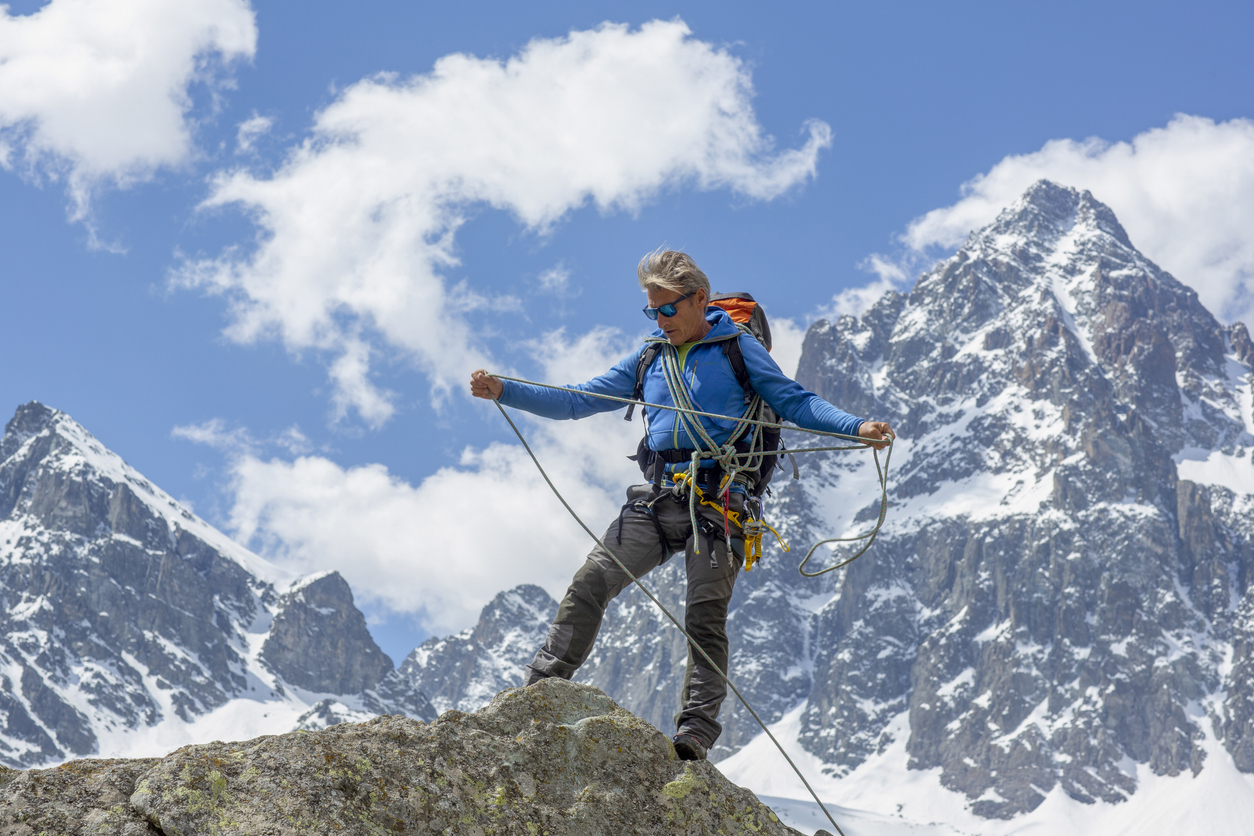
The alpine environment of the Haute Route is majestic, but it can also be unforgiving. Safety must be taken seriously, and sometimes the itinerary must be flexibly adapted by professional guides, especially when facing considerable avalanche risks.
If you're going self-guided, you must have mountaineering experience. Navigating the Haute Route means being prepared for quick weather changes. A clear sky can turn into a snow flurry in moments, so it’s essential to have the right gear and know how to use it.
Staying informed about the weather forecasts, knowing your own limitations, and respecting the mountain environment are all crucial components of a safe and enjoyable Haute Route experience.
The Winter Haute Route for Ski Tourers
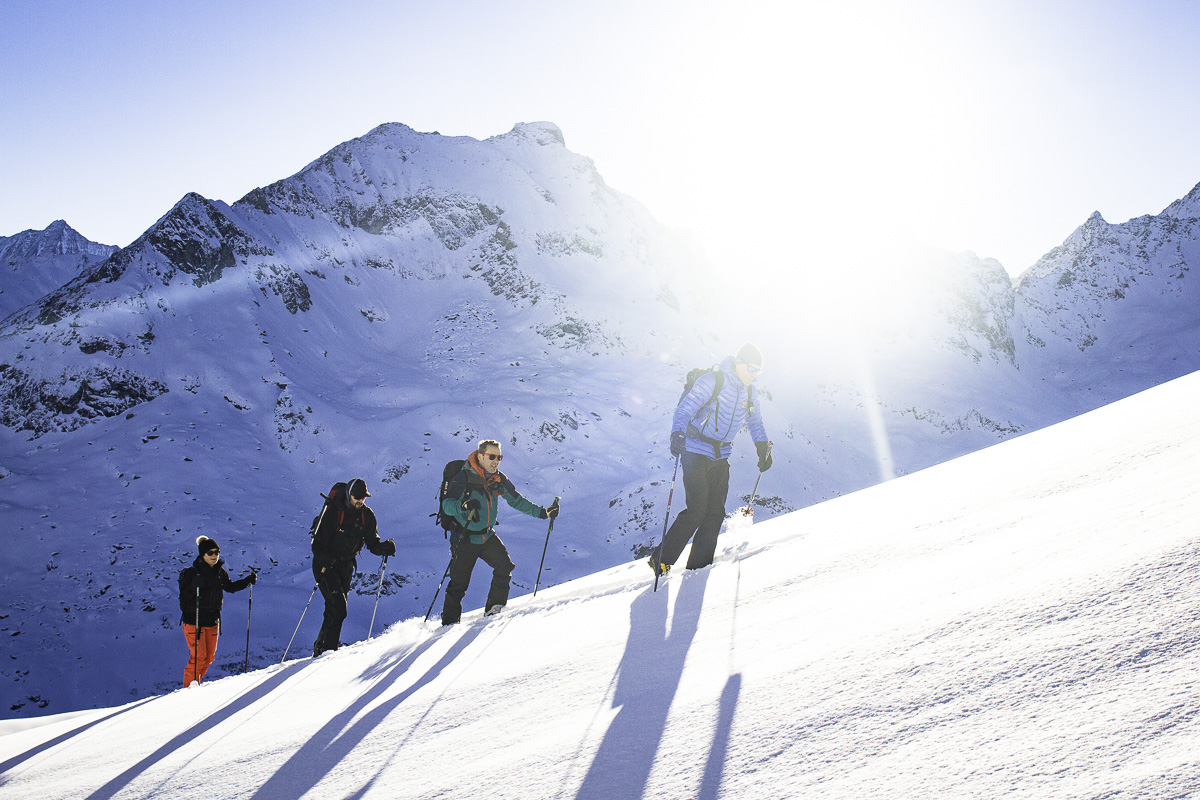
Between mid-March and May, the Haute Route transforms into a winter wonderland for ski tourers, offering a completely different yet equally mesmerising experience. The ski touring variant of the Haute Route is akin to its summertime counterpart, featuring various options and variations that cater to the experienced ski mountaineer.
You have to be an excellent skier to take on the winter Haute Route. Preparing for this version of the trek requires not only physical readiness but also a mastery of ski touring equipment and avalanche safety knowledge.
The Haute Route for Cyclists

This is not, strictly speaking the Haute Route — as in, it doesn't run from Chamonix to Zermatt. But in recent years, the cycling event called the Haute Route has attracted road cyclists from around the world to test their mettle on high alpine passes. Since its inaugural event in 2011, the Haute Route Alps cycling race has become known as one of the hardest and highest cyclo sportives in the world, offering amateur cyclists the experience of a professional race.
Over the course of seven days, cyclists tackle a series of stages that include some of the most iconic and demanding mountain passes in Europe. With full support and logistics akin to a professional race, cyclists can focus on the joy of the ride and the camaraderie that comes with it.
Up for the Challenge: Is the Haute Route Right for You?
The Walker's Haute Route is a siren call to any adventurous spirit, but it’s important to assess whether this challenge is right for you. Hikers are expected to cover roughly 25km a day with an average elevation gain of 1,200m. This requires not only physical stamina but also an appetite for long, 6 to 7 hour days spent trekking through steep and sometimes technical terrain.
Most reasonably fit hikers should be able to complete the Walker's Haute Route without too many problems, especially if they spend a few days acclimatising first. But it's worth remembering that this is no walk in the park.




